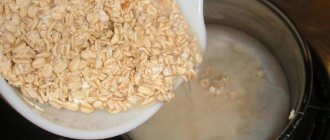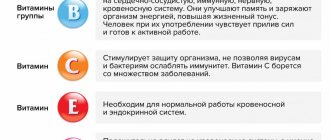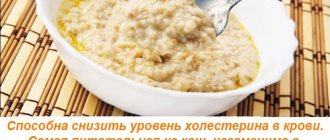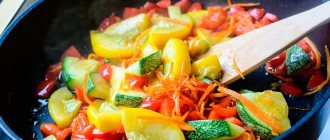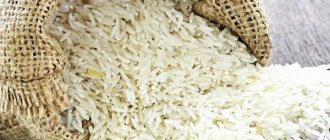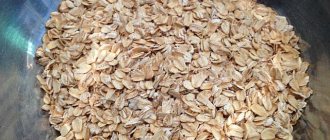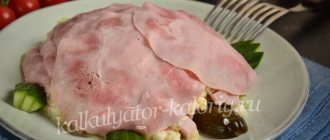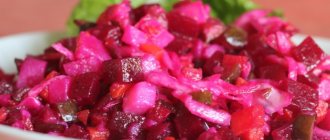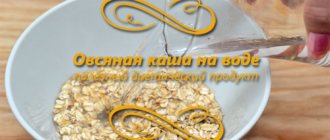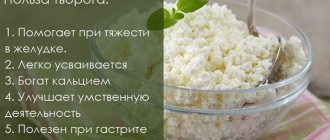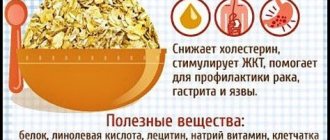Related Products
Sweet potatoes (91 cal) Jacket potatoes (82 cal) Boiled potatoes (84 cal) Red potatoes (70 cal) White potatoes (69 cal) Baked potatoes (93 cal) Roasted boiled potatoes (270 cal) ) Potato Hash Browns (213 cal) Fried Potatoes (168 cal) Raw Potatoes (74 cal) Whole Fried Potatoes (124 cal) Potato Skins (58 cal) Potato Flour (357 cal) Potato Stuff Pancakes (268 cal) Potato Salad (143 cal) Baked Potatoes (125 cal) Canned Potatoes (55 cal) Frozen Potatoes (77 cal) Potato Casserole (90 cal) Microwaved Potatoes (112 cal) .) Cooked Potatoes (79 cal)
How to make mashed potatoes
Potatoes that are slightly yellowish on the inside are best suited for mashed potatoes. Potatoes must be cut into small pieces and placed in boiling water, add salt to taste and cook for 15 or 20 minutes until done. The cooked potatoes should fall apart when cut. If you are preparing mashed potatoes using water, then part of the liquid in which the vegetable was cooked must be poured into a separate bowl and, when mashing the potatoes, added to the mashed potatoes in small portions. You should not use a blender or mixer when making mashed potatoes.
During the diet, herbs and spices will help diversify the taste, for which you can use nutmeg, lemon zest, paprika, sage, thyme. Also, green peas, boiled mushrooms or celery, herbs, carrot puree as gravy will not greatly increase the calorie content of mashed potatoes. And if you fry onions in vegetable oil and add them to the dish, the mashed potatoes will become much tastier, but the calorie content will not increase.
Don’t forget about food compatibility, this will save you from digestive problems and gaining extra pounds.
Composition of nutrients, BJU
Mashed potatoes
| For quantity: 100 grams | ||
| Calories — 106 | Calories from fat - 43 | |
| BJU | ||
| Total fat content | 4.83g | |
| Saturated | 2.87g | |
| Polyunsaturated | 0.33g | |
| Monounsaturated | 1.26g | |
| Cholesterol | 13mg | |
| Total carbohydrate content | 13.83g | |
| Dietary fiber | 1.6g | |
| Sugar | 1.6g | |
| Squirrels | 1.91g | |
| Vitamins and microelements | ||
| A - 45.25 µg | C - 5.45 mg | |
| B-6 – 0.11 mg | B-12 - 0.1 µg | |
| D - 0.15 µg | E - 0.18 mg | |
| Calcium 31mcg | Iron 0.22mg | |
| Magnesium 15.5 mg | Zinc 0.25mg | |
| Potassium 216 mg | Sodium 259 mg | |
Distribution of calories for BJU:Carbohydrates (52%) Fats (41%) Proteins (7%) | ||
Recipe for mashed potatoes without oil and water. Calorie, chemical composition and nutritional value.
Nutritional value and chemical composition of “mashed potatoes without oil on water.”
The table shows the nutritional content (calories, proteins, fats, carbohydrates, vitamins and minerals) per 100 grams of edible portion.
| Nutrient | Quantity | Norm** | % of the norm in 100 g | % of the norm in 100 kcal | 100% normal |
| Calorie content | 65 kcal | 1684 kcal | 3.9% | 6% | 2591 g |
| Squirrels | 1.7 g | 76 g | 2.2% | 3.4% | 4471 g |
| Fats | 0.4 g | 56 g | 0.7% | 1.1% | 14000 g |
| Carbohydrates | 13.7 g | 219 g | 6.3% | 9.7% | 1599 g |
| Organic acids | 0.2 g | ~ | |||
| Alimentary fiber | 1.2 g | 20 g | 6% | 9.2% | 1667 g |
| Water | 81.5 g | 2273 g | 3.6% | 5.5% | 2789 g |
| Ash | 2.209 g | ~ | |||
| Vitamins | |||||
| Vitamin A, RE | 2.7 mcg | 900 mcg | 0.3% | 0.5% | 33333 g |
| beta carotene | 0.018 mg | 5 mg | 0.4% | 0.6% | 27778 g |
| Vitamin B1, thiamine | 0.091 mg | 1.5 mg | 6.1% | 9.4% | 1648 g |
| Vitamin B2, riboflavin | 0.053 mg | 1.8 mg | 2.9% | 4.5% | 3396 g |
| Vitamin B5, pantothenic | 0.269 mg | 5 mg | 5.4% | 8.3% | 1859 |
| Vitamin B6, pyridoxine | 0.269 mg | 2 mg | 13.5% | 20.8% | 743 g |
| Vitamin B9, folates | 7.171 mcg | 400 mcg | 1.8% | 2.8% | 5578 g |
| Vitamin C, ascorbic acid | 12.55 mg | 90 mg | 13.9% | 21.4% | 717 g |
| Vitamin E, alpha tocopherol, TE | 0.09 mg | 15 mg | 0.6% | 0.9% | 16667 g |
| Vitamin H, biotin | 0.09 mcg | 50 mcg | 0.2% | 0.3% | 55556 g |
| Vitamin RR, NE | 1.6135 mg | 20 mg | 8.1% | 12.5% | 1240 g |
| Niacin | 0.932 mg | ~ | |||
| Macronutrients | |||||
| Potassium, K | 432.92 mg | 2500 mg | 17.3% | 26.6% | 577 g |
| Calcium, Ca | 17.21 mg | 1000 mg | 1.7% | 2.6% | 5811 g |
| Magnesium, Mg | 18.64 mg | 400 mg | 4.7% | 7.2% | 2146 g |
| Sodium, Na | 594.9 mg | 1300 mg | 45.8% | 70.5% | 219 g |
| Sera, S | 32.22 mg | 1000 mg | 3.2% | 4.9% | 3104 g |
| Phosphorus, P | 47.9 mg | 800 mg | 6% | 9.2% | 1670 g |
| Chlorine, Cl | 967.25 mg | 2300 mg | 42.1% | 64.8% | 238 g |
| Microelements | |||||
| Aluminium, Al | 770.9 mcg | ~ | |||
| Bor, B | 103.1 mcg | ~ | |||
| Vanadium, V | 133.56 mcg | ~ | |||
| Iron, Fe | 0.731 mg | 18 mg | 4.1% | 6.3% | 2462 g |
| Yod, I | 4.48 mcg | 150 mcg | 3% | 4.6% | 3348 g |
| Cobalt, Co | 4.712 mcg | 10 mcg | 47.1% | 72.5% | 212 g |
| Lithium, Li | 69.023 mcg | ~ | |||
| Manganese, Mn | 0.1575 mg | 2 mg | 7.9% | 12.2% | 1270 g |
| Copper, Cu | 130.11 mcg | 1000 mcg | 13% | 20% | 769 g |
| Molybdenum, Mo | 8.856 mcg | 70 mcg | 12.7% | 19.5% | 790 g |
| Nickel, Ni | 4.482 mcg | ~ | |||
| Rubidium, Rb | 448.2 mcg | ~ | |||
| Selenium, Se | 0.269 mcg | 55 mcg | 0.5% | 0.8% | 20446 g |
| Fluorine, F | 104.82 mcg | 4000 mcg | 2.6% | 4% | 3816 g |
| Chromium, Cr | 8.96 mcg | 50 mcg | 17.9% | 27.5% | 558 g |
| Zinc, Zn | 0.3319 mg | 12 mg | 2.8% | 4.3% | 3616 g |
| Digestible carbohydrates | |||||
| Starch and dextrins | 12.908 g | ~ | |||
| Mono- and disaccharides (sugars) | 0.8 g | max 100 g | |||
| Glucose (dextrose) | 0.538 g | ~ | |||
| Sucrose | 0.538 g | ~ | |||
| Fructose | 0.09 g | ~ | |||
| Essential amino acids | 0.645 g | ~ | |||
| Arginine* | 0.09 g | ~ | |||
| Valin | 0.109 g | ~ | |||
| Histidine* | 0.027 g | ~ | |||
| Isoleucine | 0.077 g | ~ | |||
| Leucine | 0.115 g | ~ | |||
| Lysine | 0.121 g | ~ | |||
| Methionine | 0.023 g | ~ | |||
| Methionine + Cysteine | 0.045 g | ~ | |||
| Threonine | 0.087 g | ~ | |||
| Tryptophan | 0.025 g | ~ | |||
| Phenylalanine | 0.088 g | ~ | |||
| Phenylalanine+Tyrosine | 0.17 g | ~ | |||
| Nonessential amino acids | 1.051 g | ~ | |||
| Alanin | 0.087 g | ~ | |||
| Aspartic acid | 0.224 g | ~ | |||
| Glycine | 0.09 g | ~ | |||
| Glutamic acid | 0.235 g | ~ | |||
| Proline | 0.082 g | ~ | |||
| Serin | 0.115 g | ~ | |||
| Tyrosine | 0.081 g | ~ | |||
| Cysteine | 0.021 g | ~ | |||
| Saturated fatty acids | |||||
| Saturated fatty acids | 0.1 g | max 18.7 g | |||
| 14:0 Miristinovaya | 0.002 g | ~ | |||
| 16:0 Palmitinaya | 0.064 g | ~ | |||
| 18:0 Stearic | 0.013 g | ~ | |||
| Monounsaturated fatty acids | 0.149 g | min 16.8 g | 0.9% | 1.4% | |
| 16:1 Palmitoleic | 0.004 g | ~ | |||
| 18:1 Oleic (omega-9) | 0.143 g | ~ | |||
| Polyunsaturated fatty acids | 0.074 g | from 11.2 to 20.6 g | 0.7% | 1.1% | |
| 18:2 Linolevaya | 0.072 g | ~ | |||
| 18:3 Linolenic | 0.074 g | ~ | |||
| Omega-6 fatty acids | 0.1 g | from 4.7 to 16.8 g | 2.1% | 3.2% |
The energy value of mashed potatoes without oil in water is 65 kcal.
Primary Source: Created in the application by the user. Read more.
** This table shows the average levels of vitamins and minerals for an adult. If you want to know the norms taking into account your gender, age and other factors, then use the “My Healthy Diet” application.
Vitamin and mineral composition of mashed potatoes
The benefits of mashed potatoes have long been known. The root vegetable from which it is prepared contains many biologically active substances beneficial to human health. A lot has been said about the fact that potatoes are rich in carbohydrates (mainly starch). But it contains no less mineral salts and proteins, not to mention amino acids, which are present in the root vegetable in almost the full composition of all those found in products of plant origin. The content of vitamins C and P in tubers is so high that 300 g of potatoes tends to provide the body with a daily dose. Conducted studies have shown that including healthy potato dishes in the daily diet can be considered a useful prevention against scurvy. This introduces ambiguity into well-known statements about the benefits and harms of mashed potatoes for the body.
Beneficial properties of the dish for the body
The benefits of potato tubers are beyond doubt. They contain a large amount of minerals and vitamins necessary for the normal functioning of the human body. Therefore, it is impossible to completely exclude them from the diet.
In addition, plant protein ensures quick satiety and reduces the likelihood of additional snacking, which is very important when following a diet for weight loss. Fiber contained in root vegetables promotes weight loss
Starch is a slowly digestible carbohydrate. It has a positive effect on digestion and strengthens the stomach. Potatoes contain a minimal amount of fat. The calorie content of puree is 3.5 times less than that of buckwheat, and 4 times less than that of pearl barley.
Potatoes are very healthy, but we ourselves turn them into harmful products. The fact is that when frying, the number of calories increases sharply and becomes 200 kcal, and a deep-fried dish contains 300 kcal. Of course, starch can lead to weight gain, but only on the condition that you eat only fried tubers around the clock, while flavoring them with lard and oil. If you use the tubers correctly, you will not be in any danger. Steam them, bake them, boil them. Avoid various improper seasonings, such as mayonnaise. Do not cook potato dishes in combination with meat. Plant and animal protein are incompatible. And most importantly, don't overeat.
Various weight loss diets using potatoes have been compiled.
Here, for example, is a 9-day diet:
- 1-3 days. Cook 1500 g of unpeeled root vegetables in the oven. Divide them into 5 meals and eat them throughout the day at equal intervals without salt and without seasonings. To improve the taste, you can add parsley or dill.
- 4-6 days. Boil 1.5 kg of tubers in their skins. Divide into five parts and eat according to the previous scheme. You can use olive oil or lemon juice for the first three meals.
- 7-9 days. You should prepare puree without milk, add a little butter, 2-3 cloves of garlic, a little herbs.
A dish made from potato tubers is healthy and nutritious. Eat to your health, most importantly, don’t overeat.
Masks made from mashed potatoes for the face
Disputes about the benefits and harms of mashed potatoes are conducted not only by doctors, but also by cosmetologists. True, beauty salons prefer to use expensive products. Crushed potato mass, which has beneficial properties, is mainly used for facial care procedures at home. A mashed potato mask is an effective remedy for wrinkles and moisturizing the skin. The product can truly be considered a panacea for dry, flaky skin. After all, when in contact with the skin of the face, it has the beneficial properties of moisturizing the epidermis well, since 2/3 consists of water.
Anti-wrinkle mask for dry skin
You need to mix 2 tbsp. l. mashed potatoes, 1 egg and 1 tsp. aloe juice Apply the warm mixture to your face and leave for a quarter of an hour. Rinse off with cool water.
Anti-wrinkle mask around the eyes
Beat 1 egg in a bowl, add 1 tbsp. l. olive oil and 1 tbsp. l. warm puree. Mix the mixture, form 2 “pancakes”, wrap them in 2 layers of gauze and apply to the eyelid area. Leave for a quarter of an hour.
Mask with lifting effect
A mask with a beneficial lifting effect can be prepared from 3 tbsp. l. mashed potatoes, egg white and 1 tsp. cream. Beat the egg whites in a bowl, add cream and potatoes. Mix the mass thoroughly. For greater benefits, steam and cleanse your facial skin before applying the mask. The duration of the procedure is 20 minutes. To consolidate the beneficial results, you can wipe your face with an ice cube.
What can you make from mashed potatoes?
It is simply impossible to refuse hot mashed potatoes with milk and butter, and yet it happens that it is not completely eaten. Don't throw away leftovers. After all, this product, useful in its properties, can serve as the basis for many new dishes.
Light soup
One of the options that allows you to use even a small amount of puree to your advantage is to prepare an appetizing light soup.
- Place a small piece of butter in a saucepan and put on fire.
- When the butter melts, add finely chopped onion.
- Add 1 tbsp to the onion fried until golden brown. l. flour and fry a little more.
- Pour 2 - 3 tbsp into the pan. milk and bring the mixture to a boil.
- Continuing to stir, add the remaining puree.
- Season the soup with salt and pepper and cook for another 10 minutes.
- When serving, you can sprinkle the soup with fresh herbs and grated cheese.
Casserole
- Beat a couple of eggs into the rest of the crumpled potatoes and, stirring well, divide the mixture in half.
- Place one part in a pre-greased mold and smooth it out.
- Place any filling on top and cover everything with the second half of the crumpled potatoes.
- Brush the casserole with egg and sprinkle with grated cheese, place in a preheated oven for half an hour.
You can transform the taste of the casserole by serving it with your favorite sauce.
The benefits of mashed potatoes for the body
The beneficial properties of potatoes have long been used by doctors in the treatment of various diseases. Mashed potatoes are classified as dietary pureed dishes, which are recommended for use for gastritis, disorders and disorders of the digestive system. The benefit of mashed potatoes for people with diseases of the cardiovascular system lies in the considerable content of potassium in the root vegetable. 200 g of potatoes contains half of its daily value. This microelement has the ability not only to have a beneficial effect on the functioning of the heart, but also to be beneficial to blood vessels and bones.
What can you put in puree?
It seems quite obvious that classic mashed potatoes contain potatoes, milk or cream. However, this is debatable, because you have the opportunity to diversify it and add slightly different ingredients to it. For example, by adding a few sprigs of thyme, rosemary or other herbs, you can easily get a fragrant and tasty dish. It would be useful to add butter or olive oil, which will add airiness. At the end of the day, there's no need to skimp on the money, so it's best to buy high-fat butter if you really want a delicious puree.
Some housewives use grated cheese, natural yogurt or sour cream as an additive. In general, fried onions, raw eggs, mushrooms, fresh herbs - all these ingredients will only improve the taste of your puree, so feel free to experiment.
To make the puree more varied not only in taste, but also in color, boil the potatoes along with beets, pumpkin or carrots. The unusual color is ready, and the surprise of your friends or relatives is definitely guaranteed.
Are there any benefits to dry mashed potatoes?
The question of the harm and benefit of instant mashed potatoes is of interest to most consumers. To answer this unambiguously, you need to know the technology for preparing the product. It's pretty simple:
- The tubers are washed and treated with steam.
- Then they are cleaned and cut into slices for faster cooking.
- Blanch for 2 - 3 minutes.
- Place in boiling water and bring to readiness.
- After cooking, the root vegetables are mashed by oxen.
- Then the potato mass is laid out on a hot drum, where it dries quickly.
- Next, the dry layers are broken and ground into “flour”, spices are added and packaged.
Dry mashed potatoes undoubtedly contain chemicals, but they are few and will not cause much harm. But in general, this product does not cause harm like dangerous fast food. Disputes regarding the harm and benefits of dry mashed potatoes among nutritionists lean towards its benefits. Therefore, the prevailing opinion about the dangers of dry mashed potatoes is actually a misconception.
Micro- and macroelements in Mashed Potatoes (with Whole Milk and Butter)
Mashed Potatoes (with Whole Milk and Butter) contains the following elements: Mono- and disaccharides, SFA - Saturated fatty acids, MUFA - Monounsaturated fatty acids, PUFA - Polyunsaturated fatty acids, Cholesterol, Sodium, Potassium.
| Mono- and disaccharides, g. | 1,43 |
| SFA – Saturated fatty acids, g. | 2,078 |
| MUFA - Monounsaturated fatty acids, g. | 0,851 |
| PUFA - Polyunsaturated fatty acids, g. | 0,16 |
| Cholesterol, mg | 11 |
| Sodium, mg | 317 |
| Potassium, mg | 286 |
Calorie content and chemical composition of other products
| Product | Kcal | Proteins, g | Fats, g | Angle, g | |
| White Potatoes (with Peel) | 70 | 1,68 | 0,1 | 15,71 | |
| White Potatoes (with Peel, Baked) | 94 | 2,1 | 0,15 | 21,08 | |
| Mashed potatoes | 100 | 1,8 | 3,54 | 15,72 | |
| Fried potatoes | 149 | 2,32 | 7 | 20,06 | |
| Potatoes (without peel, with salt, boiled) | 87 | 1,87 | 0,1 | 20,13 | |
| Mashed Potatoes (from Dry Powder) | 105 | 2,02 | 5,56 | 12,22 | |
| Mashed Potatoes (with Whole Milk) | 83 | 1,92 | 0,57 | 17,53 | |
| Mashed Potatoes (with Whole Milk and Butter) | 113 | 1,87 | 4,22 | 16,77 | |
| Baked Potato (Eat with Peel) | 109 | 2,43 | 2,2 | 20,53 | |
| Baked Potato (Eat without Peel) | 92 | 1,95 | 0,1 | 21,39 | |
| Potato Pancakes (from Frozen) | 217 | 3,14 | 11,43 | 27,93 | |
| Red Potatoes (with Peel) | 72 | 1,89 | 0,14 | 15,9 | |
| Red Potatoes (with Peel, Baked) | 89 | 2,3 | 0,15 | 19,59 | |
| Sweet potato | 60 | 2 | 13,8 | ||
| Potato | 77 | 2 | 0,4 | 16,3 | |
| Yam | 118 | 1,53 | 0,17 | 23,78 | |
| New potatoes | 77 | 2 | 0,4 | 16,3 | |
| Boiled potatoes | 86 | 1,71 | 0,1 | 18,21 | |
| Pickled potatoes | 86 | 1,71 | 0,1 | 18,21 | |
| Purple potatoes | 72 | 2 | 0,4 | 16 | |
| Dried potatoes | 317 | 6,6 | 0,3 | 71,6 | |
| Frozen French fries | 260 | 2,83 | 14,95 | 25,65 | |
| Potato flakes | 369 | 7 | 1 | 83 | |
| French fries, with salt added during frying, frozen, before cooking (raw) | 167 | 2,41 | 5,53 | 24,58 | |
| French fries, with salt added during frying, frozen, after cooking in the oven | 199 | 2,9 | 6,76 | 28,86 | |
| French fries, cut or straight, with salt added during frying, frozen, before cooking (raw) | 174 | 2,12 | 5,05 | 27,22 | |
| French fries, cut or straight, with salt added during frying, frozen, after cooking in the oven | 166 | 2,51 | 5,13 | 25,2 | |
| White potatoes, unpeeled, baked | 94 | 2,1 | 0,15 | 18,98 | |
| White potatoes, unpeeled, raw | 69 | 1,68 | 0,1 | 13,31 | |
| Jacket potatoes, boiled, skins with salt | 78 | 2,86 | 0,1 | 13,9 | |
| Jacket potatoes, boiled, peeled, no added salt | 78 | 2,86 | 0,1 | 13,91 | |
| Jacket potatoes, boiled, core with salt | 87 | 1,87 | 0,1 | 18,13 | |
| Jacket potatoes, boiled, core, no added salt | 87 | 1,87 | 0,1 | 18,33 | |
| Jacket potatoes baked without salt | 93 | 2,5 | 0,13 | 18,95 | |
| Jacket potatoes cooked in the microwave without adding salt | 132 | 4,39 | 0,1 | 24,13 | |
| Microwaved jacket potatoes, skin and core, with salt | 105 | 2,44 | 0,1 | 21,94 | |
| Jacket potatoes, microwaved, peeled, with salt | 132 | 4,39 | 0,1 | 29,63 | |
| Jacket potatoes, microwaved, core, no salt added | 100 | 2,1 | 0,1 | 21,68 | |
| Microwaved jacket potatoes, core, with salt | 100 | 2,1 | 0,1 | 21,68 | |
| Breaded potatoes, homemade according to recipe with added margarine | 132 | 5,06 | 7,59 | 9,47 | |
| Breaded potatoes, homemade according to recipe with added butter | 132 | 5,06 | 7,59 | 9,47 | |
| Breaded potatoes, dry mix, uncooked | 314 | 8,9 | 3,7 | 70,21 | |
| Breaded potatoes, dry mixture prepared with water, milk and butter | 93 | 2,3 | 4,12 | 11,94 | |
| Boiled potatoes without skin without adding salt | 86 | 1,71 | 0,1 | 18,21 | |
| Boiled potatoes without peel with salt | 86 | 1,71 | 0,1 | 18,01 | |
| Potato wedges, frozen | 123 | 2,7 | 2,2 | 23,5 | |
| Red potatoes, unpeeled, baked | 89 | 2,3 | 0,15 | 17,79 | |
| Red potatoes, unpeeled, raw | 70 | 1,89 | 0,14 | 14,2 | |
| Potato slices with added margarine, homemade | 88 | 2,87 | 3,68 | 8,88 | |
| Potato slices with added butter, homemade | 88 | 2,87 | 3,68 | 8,88 |
How to make delicious mashed potatoes
There is probably no person who does not know how to cook this dish. But few people know how to make it truly tasty. Meanwhile, there are little tricks that allow you to turn banal crumpled potatoes into the most delicate puree without lumps.
For this you will need the following ingredients:
- 10 - 12 potatoes;
- half a glass of cream or a glass of milk;
- 2 tbsp. l. butter;
- a small piece of celery root;
- 1/3 tsp. salt.
We recommend reading: Celery: beneficial properties and contraindications
Preparation:
- Peel the potatoes, wash them and cut the tubers into small pieces for quick cooking.
- Place in a saucepan, add hot water and set to cook.
- As soon as the water boils, add salt.
- Peel the celery, cut it and add it to the pan with the potatoes.
- Pour milk into a saucepan, put butter in it and set it to heat.
- Boil the root vegetables until tender and drain off the remaining water.
- After drying the potatoes and celery a little, begin to mash them with a potato masher.
- Hot milk and butter are poured into the pan.
- Continue kneading the mass until the last lump.
- Place the puree on a plate and pour over melted butter.
With cream cheese
- Cooking time: 40 minutes.
- Number of servings: 10 persons.
- Calorie content of the dish: 133 kcal per 100 grams.
- Purpose: afternoon snack.
- Cuisine: English.
- Difficulty: medium.
Mashed potatoes are a great side dish for any meal. The classic recipe has long gained popularity among people all over the world, but it can also be improved by making the taste a little piquant. Expanding on the standard recipe, many cooks beat in egg whites or yolks, some use the whole egg to achieve the ideal consistency, but others enjoy unusual combinations of potatoes with cheese or heavy cream.
- Potatoes – 1 kg
- Heavy cream – 100 ml
- Butter – 50 g
- Cream cheese – 100 g
- Table salt - to taste
- The tubers need to be cleaned and washed with plenty of running water. Next, cut them into large pieces. Throw the workpiece into water and cook until tender. During cooking, you need to salt the vegetables.
- Boiled potatoes need to be crushed with a special press (you can see the design of this device in the photo on the Internet) or use a masher. At this stage, you need to add cream, cheese and butter, mix everything until smooth. The puree becomes dense, but at the same time retains airiness.
- When serving, sprinkle with fresh herbs.
Read also What does ripe broccoli look like photo
The history of mashed potatoes
Europeans knew little about this root vegetable, brought from South America in the 17th century. For the first time, crushed potatoes were mentioned in the book “Pirates of America” by A. Exquemelin, a ship surgeon who participated in pirate voyages to the shores of the American continent. It describes the method of preparing potatoes by the Peruvian Indians, who interested the author, who made chunya from it. What tricks did the Indians have to resort to in order to rid wild root vegetables of the bitter taste?
We recommend reading: Potatoes: beneficial properties and contraindications
Small tubers were scattered for frying in the sun. During the rainy season they were soaked and then frozen at the first frost. After such a long processing, the bitterness disappeared, and the women had to turn the tubers into pulp, that is, crush them directly in the peel. Their bare feet served as a potato masher. So the “trampled” potato chunya was eaten by the whole tribe. It is clear that this method of cooking could not take root in Europe, and, like true gourmets, the French adapted it: the result was mashed potatoes.
Calorie content of carrot and celery puree
Celery and carrots are close in composition to potatoes: they have the same set of vitamins and microelements. The percentage of useful components is the same. In terms of nutritional value, carrots and celery are equivalent: 32 kcal.
Cooked in water without added fat, they are the lowest calorie side dishes. The taste of the celery side dish is improved with the help of aromatic herbs (rosemary, sage). The carrot version does not require such additives. Usually both types of side dishes are mixed with potato to add flavor.
Nutritional value of 100 g of vegetable purees (kcal):
- on the water – 32;
- with vegetable oil – 122;
- with cream – 107.
Excess fat impairs the taste of these vegetables, the ratio is 1:10.
